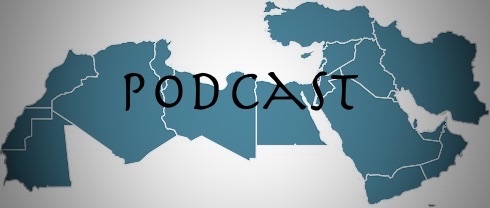Israel in geopolitical terms is America in microcosm. My Lai and Deir Yassin massacres share certain elements in common: specific concrete structure, policies and values of societies founded on militarism, ethnocentrism and xenophobia.
by Norman Pollack – Counterpunch
[Author’s note: Atrocities continue. I go back to the formative context for an understanding of today.]
The fragmentation of the Palestinian community, legacy and present reality of the Occupation, is, for the Israelis, standard operating procedure. Where population displacement, forced evacuation, and ethnic cleansing did not fully clear the military-political-ideological agenda, all steps clearly marked from Day One in the foundation year of Israeli settlement as pointing to the creation of the Jewish State, there is six-decades-and-counting later the continued process of economic-psychological pulverization of the will of whomever remains of the Palestinian people subject to permanent exile in their own land. Not a very pretty picture, indeed, so ugly that much of the world turns away, averting their gaze lest they recognize their own complicity in the power politics of scapegoat-creation to maintain a fragile equilibrium in the world system.
Israel in geopolitical terms is America in microcosm—as its fortunes go, so do those of the US in its quest since World War II to maintain its unilateral global hegemony (a course parallel to, and intersecting with, the entire history of the Israeli nation), and that, not fortuitously, but as the test case of the resolution of American power. Israel is to America perhaps what India had been to Britain earlier, a structural pivot point in their respective frameworks of global imperialism—a jewel in the crown, except that in India the colonial project was one of subjugation and spoliation via the extraction of riches, while in Israel we see, for Israelis, as one of us, in the top tier of “world-civilizing races,” a partnership-of-equals established for purposes of mutual advantage: Israel, a regional powerhouse as outpost of militarism and technological achievement making its way in the world economy while safeguarding America’s strategic posture in the heartland not only of oil but also, as global crossroads, that of providing a commanding position with respect to Europe, Africa, Asia, and more particularly, Russia and China. To Israel: We have your back; to America: Your global network of bases notwithstanding, we are your true, devoted (nuclear-armed) friends, the most dependable ally in reinforcing your world power. For your power is ours, your success, ours.
Symbolically, if one had to choose a single item, this bonding as mutual purveyors of repression, itself an emotional cement bar none in holding nations together, can be found in the massacres each committed, My Lai and Deir Yassin—windows into a mind-set that compels asking the question, Can one fathom the darkness and depravity of these events? (I am here reminded of attending a Jewish Studies lecture at my university and asking the speaker–my having just read a book by the Israeli historian Benny Morris which described widespread rape by Jewish soldiers—about IDF atrocities, to which her only reply was, “soldiers will be soldiers.”) My Lai and Deir Yassin share certain elements in common, not, however, as testifying to some universal principle of soldier-ness, but specific concrete structure, policies, and values of societies founded on militarism, ethnocentrism, and xenophobia supported by a command-system of hierarchical power, be it of whatever complexion. Not all soldiers rape and murder; hegemonic social orders, on the other hand, require a paradigm of repression to keep their order, stability, and lines of authority intact.
My Lai, March 16, 1968, American forces brutally murdered between 347 and 504 unarmed civilians, platoon leader William Calley personally killing 22 villagers, then receiving (after an extensive cover-up) a brief sentence under house arrest. The orders were to kill everyone, men, women, children, infants, burn down the houses, destroy the drinking wells, leave nothing standing. On approach, people in the rice fields, in the village, machine-gun without warning all in sight; women and children praying, shot in the head; 70-80 villagers herded into an irrigation ditch, shot; women covering their children, shot, then the children, shot. My Lai was not the only massacre, Bin Hoa and others—integral to the game plan. In what follows, we find national-companions in bloodshed, but the emphasis in this article is on Israel, and hence greater attention to Deir Yassin.
***
First we turn to Arno Mayer’s excellent Ploughshares into Swords for context and overview, the run-up to and surrounding events of Israel’s Independence, May 14, 1948, a period of obvious upheaval, armed raids on both sides, but, standing out, Irgun and Lehi paramilitary acts of atrocity, as in bombings of bus stations and crowded areas (Haganah and Zionist leadership, especially Ben-Gurion, looking quietly on). Territorial expansion was a primary uncontested goal of all Zionist factions from the start, as boundaries were deliberately ignored or misconstrued and terrorist acts were intended to frighten Palestinians and encourage their flight. Conflict was everywhere, frequently centered on the strategic routes, such as the road to supply Jerusalem (Deir Yassin a small prosperous village, living at peace with its Jewish neighbor, Givat Shaul, was situated on a hill overlooking that highway). Mayer writes, “To avoid being caught up in the escalating crossfire, members of the Palestinian Arab upper and middle classes began to leave Haifa, Jaffa, and Jerusalem to seek temporary refuge in the capitals of neighboring Arab countries—close to 30,000 by the end of March [1948].” And this, just the start of a mass exodus, the atrocities at Deir Yassin in part calculated to be an object lesson to frighten and stampede the Palestinian population into terrified flight. (If my thoughts here of ethnic cleansing as a primordial aim of occupation policy are viewed as an exaggeration, I make no apology—this was already the strategy 1947-8, formalized as Plan D or Dalet, “the official Zionist intent to expand the state beyond the allocated territory.” (Mayer states, “before long the armed forces of the inchoate Jewish state increased its designated 5,400 square miles by 2,300 miles.”)
Not bad, surely a good running start on the eve of Independence: “Plan D was activated in late March 1948 [just weeks before the Deir Yassin massacre—NP], coincident with the arrival of urgently needed Czech arms. Within six weeks the Hagana[h] and underground forces seized some 180 Arab villages and five Arab cities, most of them on the far side of the U.N. line. Breaking the indigenous resistance, they occupied Tiberias, Haifa, and western Jerusalem during the second half of April and Safed, Jaffa, and Acre during the first half of May. Many of the Arab inhabitants escaped or fled to neighboring countries, and the victors appropriated their land and property.” Thus Deir Yassin did not stand alone; as in the case of similar atrocities, it may well have fallen under the radar screen at that moment. What follows is the dynamite of Mayer’s analysis, the utter cruelty and systemization of death on Israelis’ part, which cannot but help resonate with Israel’s present-day conduct in Gaza as a direct line of historical causation shaping and reinforcing the mind-set of a nation (just as My Lai has done the same for America).
He writes, “The willed or forced departure of about 380,000 Arabs during these months considerably enhanced the ethnic homogeneity of the state-to-be. But what was in part an historically routine politico-military campaign was otherwise marked by the worst horrors of irregular and unconventional warfare: arbitrary executions, massacres, rape, arson, looting.” I am struck by the words “an historically routine politico-military campaign,” because of the evident violation, as in My Lai, of the accepted norm of war conduct, now transmogrified as WAR CRIMES, that soldiers-will-be-soldiers is a pathetic defense hardly exonerative. Mayer continues: “These unexpected [I cannot share the author’s generosity here, particularly when he notes the deliberateness of conduct] but neither adventitious nor minor savageries of war gave wings to the fleeing Arab Palestinians.” In sum, with mass killings in the air as official policy, nothing is unexpected, the deeds themselves an indelible mark on a nation’s history, humaneness, and integrity. Sorry for what may seem to others an oversimplification, but not to me: My Lai is America, Deir Yassin is Israel. (Mayer, I’m certain, would be in agreement, my jumping on “unexpected” only to make the point, hopefully not at his expense, about the core of repression in policies of this character.)
Superbly, in discussing this foundation period, he reveals the dimensions of barbarism of Israel’s policy: “In 1948 there were at least twenty massacres carried out by Jews, five of them claiming more than seventy victims each. [Any reason to doubt the stimulus to forced evacuation—and why the right of return should have the highest MORAL standing among people of good will?] More often than not the assailants were army officers and common soldiers who thought they were carrying out orders. There is no record that any were ever called to account, and in some instances higher military and civilian leaders had tacitly given their approval. Irgun and Lehi militants were implicated, but enjoyed their customary impunity.” Given this background, Deir Yassin was bound to happen, less to protect the road to Jerusalem than to let the Israeli armed forces demonstrate their might and so facilitate the transfer of the population out, thus creating the refugee problem as the salience of the Arab-Israeli conflict.
Deir Yassin, April 9, 1948. Mayer’s succinct summary says it all. Early morning stand-off, Irgun-Lehi forces, later joined by Palmach (Haganah’s voluntary elite unit), assault the village: “A terrible fury followed. At least 100 villagers were slaughtered—mainly old men, women, and children. But the rage of the marauders was beyond measuring. They murdered, raped, and looted and blew up and scorched unevacuated houses. Finally, several traumatized residents were forced into an open truck and taken to Jerusalem. Accompanied by jubilant Jewish soldiers brandishing rifles, they were driven through jeering Jewish neighborhoods before returning to a summary execution in Deir Yassin.” Bread-and-circuses of a depraved society—I say, “depraved,” because no-one in authority has ever taken responsibility, not to say the acts themselves, including parading the victims before excited crowds (like recently the crowds who turned out on the Siderot hillside in a carnival atmosphere to watch the bombing/shelling of Gaza). We have perhaps come a long way from the late-1940s—violence as spectator sport having been made easier via remote control, just as, instead of tossing hand grenades into the houses of Deir Yassin (seen momentarily from other accounts) before barging in guns blazing, we find giant machinery bulldozing homes in destroying Palestinian villages.
When Arab governments intervened five weeks later, Deir Yassin and Israel’s Independence became fused in their eyes, a conflict that would have occurred in any case in light of the clear expansionist plans of the Israeli leadership and the population displacement already under way, but the village’s atrocities added determination to the Arabs’ cause. Going back a step, we see Deir Yassin as a seeming byproduct of liberating the Tel Aviv-Jerusalem highway, the road having been cut-off the month before, Jerusalem now put under siege. While Palmach struck nearby on April 6, Irgun and Lehi swung into action at Deir Yassin on the 9th. There was already, from January 20, a peace pact signed between it and Givat Shaul, the latter’s residents actually trying to stop the subsequent slaughter, to no avail—an effort matched by Deir Yassin villagers on February 13, who helped repel an armed gang which attacked Givat Shaul, and, for their pains, found their sheep killed by the gang. (This makes the Irgun-Lehi violence all the more gratuitous and repulsive, as though manufacturing and then ensuring hostility between the Arab and Jewish communities.)
Irgun and Lehi are the extremists that make Haganah look good. Irgun specialized in bombings, Lehi in assassinations—at Deir Yassin Palmach (part of Haganah) supplied ammunition to the others and shot at fleeing villagers. Why the attack? An Irgun member explained that for the first time Jewish forces were going on the offensive and this had to show the Arabs Jewish determination. David Shaltiel, Haganah’s commander in Jerusalem, went along with the attack plan, despite the peace pact and urgings to give the villagers warning. At the Irgun-Lehi planning session there was agreement about expelling them, and disagreement about whether to kill all who didn’t flee. The pre-attack briefing was reported to be festive, here paramilitary forces could come out in the open—and express solidarity with one another. The attack itself, on orders of the Irgun commander, Ben Zion Cohen, was house-to-house, two hand grenades per house thrown through the doors and windows before going in, soon supplemented by explosives killing all inside. The fighting began shortly before 5 a.m. and was over by 11 a.m., the head of the International Red Cross in Palestine visiting two days later finding “more than 200 dead, men, women, children.” A disputed number of villagers (25-80) were executed after the fighting stopped, their bodies dumped in a quarry.
Benny Morris, anathema to faculty members in Jewish Studies at my university, quotes Meir Pa’il, a Palmach intelligence officer who on April 9th viewed the village first-hand: “The dissidents [Irgun and Lehi] were going about the village robbing and stealing everything. Chickens, radio sets, sugar, money, gold and more…. Each dissident walked about the village dirty with blood and proud of the number of persons he had killed.” There were 55 children, their parents now killed, who were dropped at the Jaffa Gate in Jerusalem and left there, a member of the well-known Husseini family in Palestine taking them in and caring for them. Finally, Yitzhak Levy, of Haganah Intelligence, reported that Irgun men “raped a number of Arab girls and murdered them afterward.”
***
Jumping to the present, we see Naftali Bennett in a New York Times op-ed entitled, “Two-State Is No Solution,” (Nov. 5), presenting an unrepentant rejection of meaningful negotiation, therefore leaving the status quo of Occupation and resulting Palestinian oppression and humiliation wholly intact. In a careful analysis of Bennett’s parsing of Areas A, B, and C, of the paradigm for establishing Palestinian rights and sovereignty, John Whitbeck, an international lawyer, writing a CounterPunch article, “Naftali Bennett’s Wake Up Call to the West,” (Nov. 7-9), explores the shortcomings and hidden reservations signaling Israeli hard-line attitudes and policy toward any kind of just resolution of the suffering and plight of the Palestinian people. For an additional take, emphasis in accordance with the above, my New York Times Comment on the article, same date, follows:
Step one: eradication of Palestinian sovereignty; step two, further tighten the Occupation under a new name. No, Bennett, your words fool no-one (except those who wish to be deceived). You cite rocket attacks into Israel, yet do not mention saturation bombing, wildly disproportionate casualty numbers, blockade, daily humiliation of the Palestinian people, a history of domination symbolized by periodic atrocities, destruction of homes, killing of minors.
There will not be peace–the continuity of contempt for Palestinians by Israeli leaders from Ben-Gurion, Meir, Shamir, etc. down to today, hardly speaks of PEACE, respect, much less honoring Torah teachings. Bennett, read Arno Mayer’s Ploughshares into Swords, in case your mind is blank about the Israeli mindset and practices. As a Jew deeply appreciative of Judaism’s contribution to the world’s moral-ethical heritage, and deeply reverent to Judaism as the religion of my mother and father, I say: Israel contaminates Judaism with its militarism, arrogance, oppression of the weak, its international role of backing fascist-type governments which themselves murder Jews–Israel, God is watching, will someday pay the price for its Nazi-like conduct toward others in the present day.
Stifle internal dissent. Push the propaganda barrage that Jewish critics of Israel are self-hating Jews, sorry, we see through you. We’ve got your number: Oppression, the name of the game. Even Labor joins Likud on this.
Norman Pollack has written on Populism. His interests are social theory and the structural analysis of capitalism and fascism. He can be reached at pollackn@msu.edu.





























